Annuals and Perennials To Know And Grow
Annuals and Perennials To Know And Grow
While there are hundreds of annuals and perennials, this post highlights several that do especially well in this area.
Annuals For Flowers All Summer
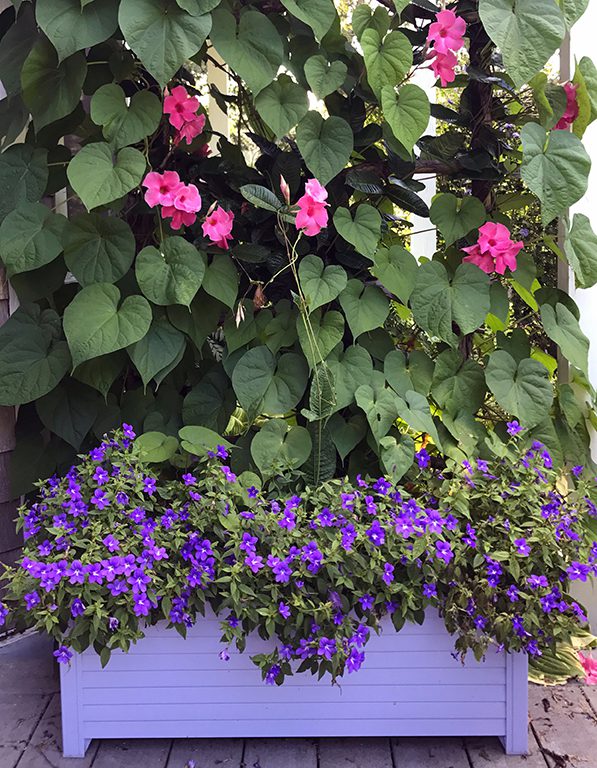
This box contains Mandevilla and moonflower vines, but planted underneath is Browallia Endless Illumination. This Browallia is especially good in part-shade. This box, for example, gets only three hours of morning sun. Browallia also comes in white and the purple and white are lovely mixed together. You can use Browallia with New Guinea Impatiens for a longer lasting blue/purple than Lobelia.
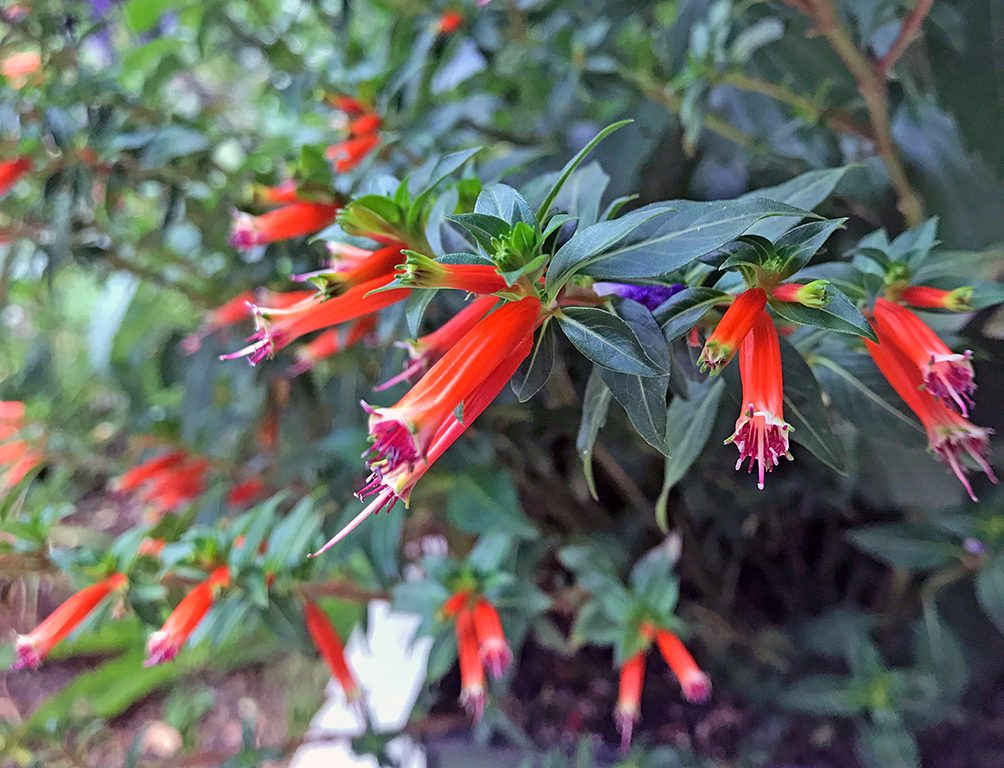
Are you looking to attract hummingbirds to your patio or deck? Put this Cuphea from Proven Winners into your pots and boxes. It’s called Vermillionaire and you’ll feel rich in hummers when you grow it.
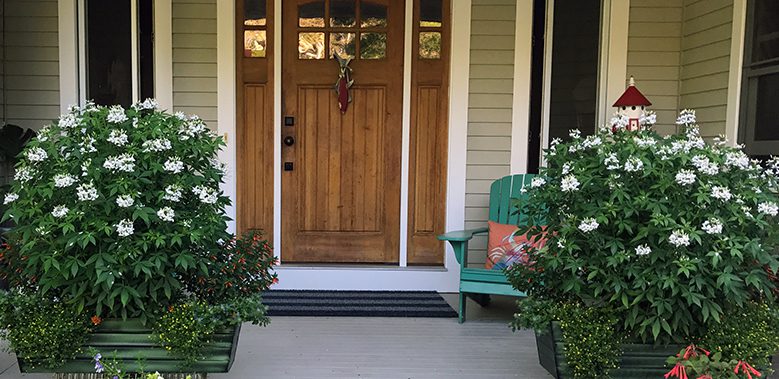
If you need a tall annual that will flower all summer, look for Seniorita Blanca (white) or Seniorita Rosilita (pink) from Proven Winners. These Cleome are totally different from the common, seed-grown varieties you get in six-packs. These stay full and flower-filled all summer long. They are good in the garden or in containers as you see here.
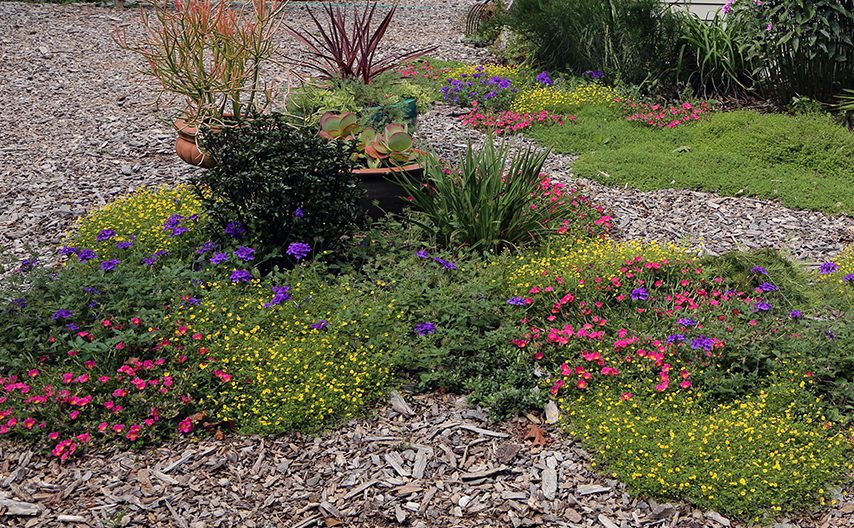
Looking for flowers for a dry location such as a slope or in a cemetery? These will prosper in such locations. Mecardonia ‘Gold Dust’ (yellow), Portulaca Mohave Pink, and Superbena Blue are all drought tolerant.

Looking for a low-growing annual for sun that attracts butterflies? Try Profusion Zinnias. These come in a variety of colors and they flower all summer, no deadheading required. Plant Profusion Zinnias with a time-release fertilizer and space them about 12 to 16 inches apart.
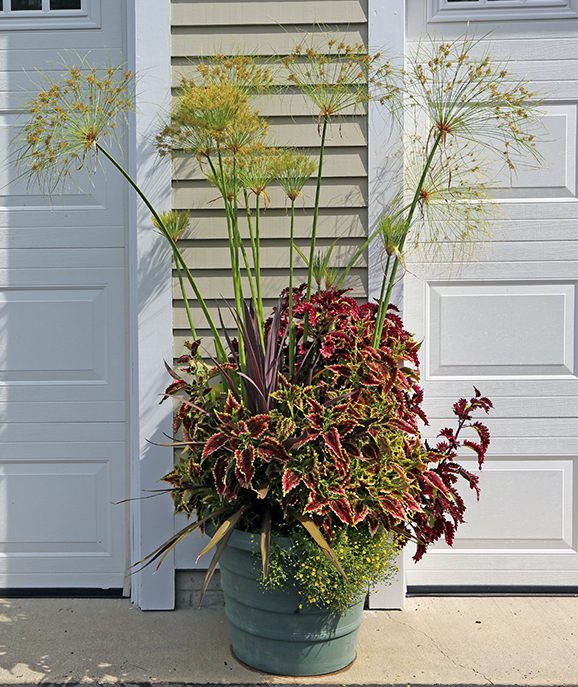
If you want a big and bold container, you can’t go wrong with a King Tut Papyrus and several coleus. Here I combined Proven Winners coleus with a Mecardonia ‘Gold Dust’ to hang over the edge and a purple spiky cordyline. The King Tut explodes like fireworks above it all.
Perennials that do well on the Cape and Islands.
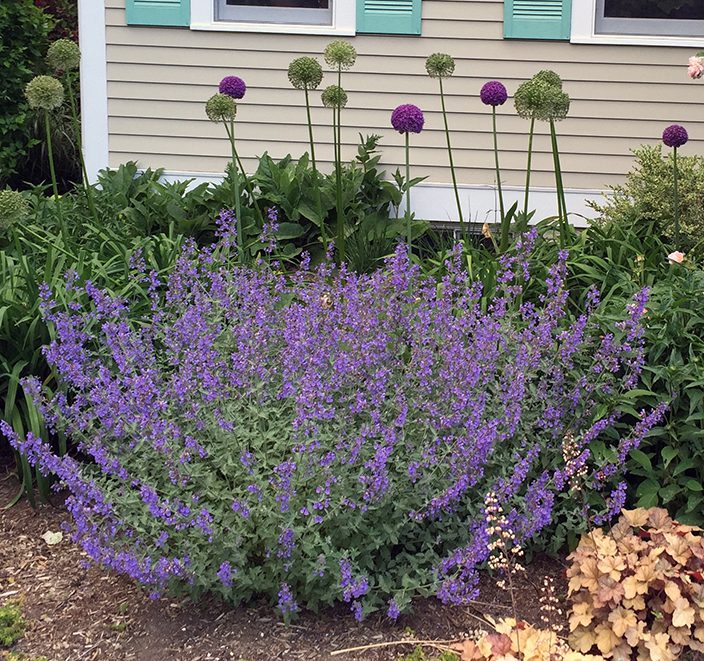
One of the best perennials for sun is Nepeta ‘Walker’s Low.’ It flowers heavily in May and June. After it’s finished flowering (early July) you can either leave it as is, shear it down into a ball-shape, or cut it to the ground. When sheared or cut to the ground in early July it will fill out with new foliage and look neat for the rest of the summer. In this photo you see Allium in the background (plant these bulbs in the fall) and Heuchera Pinot Gris on the right corner.
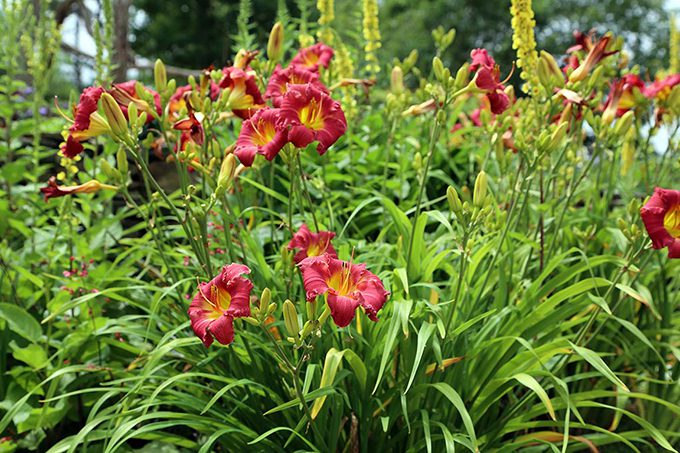
If you like early flowering daylilies but are tired of the usual yellow types, check out Early Bird Cardinal. The flowers are coral with a yellow throat. After the flowers finish, cut off the old flower stems and fertilize to promote a few more flowers later in the summer.

Butterfly weed, aka Asclepias tuberosa, is the plant for attracting monarchs. This perennial is also drought tolerant and makes a good cut flower as well. Plant in well drained soils and don’t over-water.
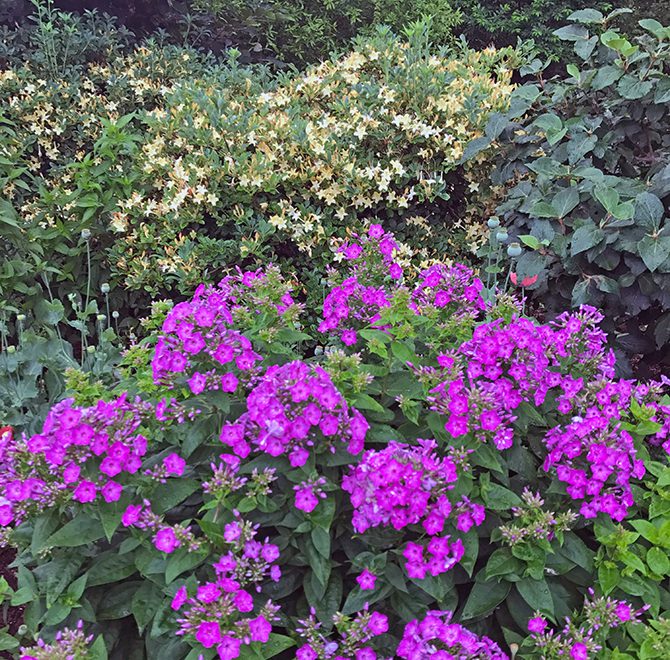
The Volcano series of summer phlox (Phlox paniculata) are wonderful because they are shorter and when deadheaded after their first flowering will come back gangbusters with huge flowers in late summer. This Volcano phlox is planted in front of a Lemon Drop Azalea, one of the fragrant azaleas that bloom in July.
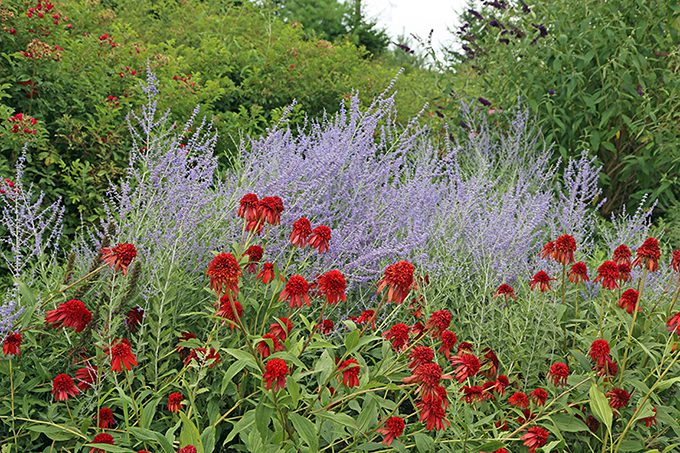
This lovely combination is made of the tall flowering Russian Sage (five or six plants in the back of the bed) and Hot Papaya Echinacea. Both of these plants do well in full sun and well drained soils. Place these plants two feet apart center to center.
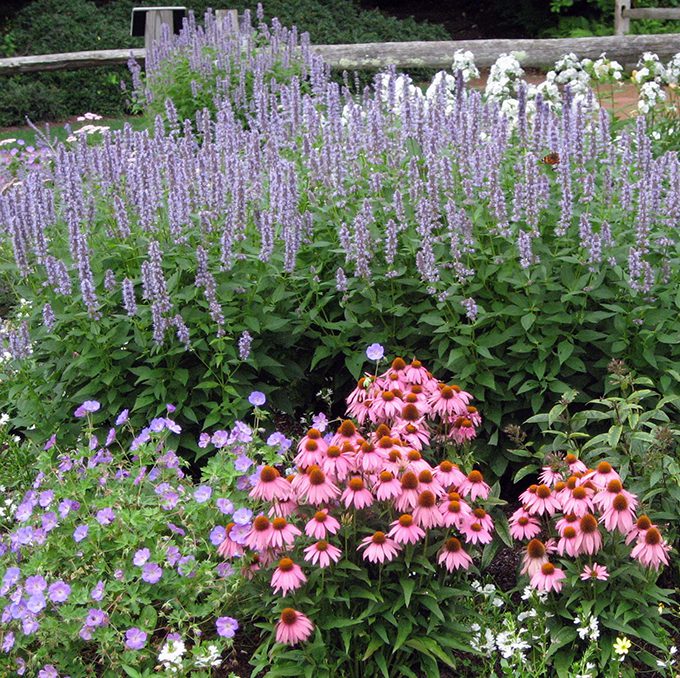
Most people love the combination of pink and blue, and this grouping doesn’t disappoint. In the background, Agastache Blue Fortune. In the foreground, Geranium Rozanne is on the left and a group of Echinacea is on the right. The white plant in the background is Phlox David and at the bottom of the photo you see some white Scaevola, an annual that looks good at the front of perennial gardens.

Epimedium is a problem-solving plant. It grows in shade and is drought tolerant. It’s also weed smothering because it grows very thickly. This lovely plant is the perfect groundcover for shade and combines beautifully with hosta. Epimedium flowers in the spring but the reason you should plant it is the foliage.
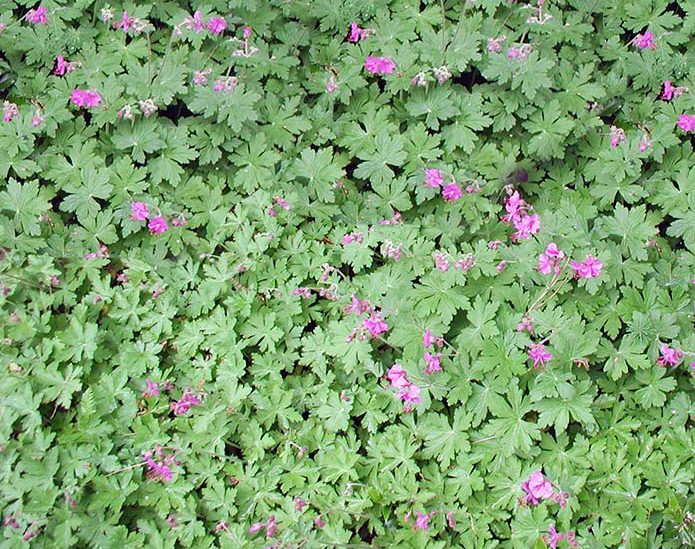
Another weed smothering plant and problem solver is Geranium macrorrhizum. Deer and rabbits don’t eat this plant. It grows thickly and is semi-evergreen. This perennial is one of the best plants for dry shade and for planted on partly shaded slopes. It’s a good “socks and shoes plant” for around shrubs and trees.
Whether you need flowers all summer (annuals) or problem solving plants, we’re here to help!
Subscribe To Our Newsletter
Sign up for our weekly email about sales and events.
